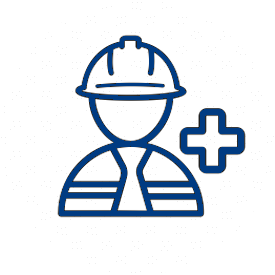Although robots are expected to increasingly take over hazardous jobs previously performed by workers, information technologies are likely to detect dangers more effectively, new risks can arise. For example, from the closer interaction between humans and smart technological equipment with unanticipated movements, the toxicity of materials used in 3D printing technologies, the sedentary positions associated with IoT technologies and the psychological effects of the virtualisation of work and the possibility of working anytime, anywhere. Syndromes such as technostress (which is the stress deriving from altered habits of work and collaboration, due to the introduction of new technologies), occupational burn-out, ‘fear of missing out’ (FOMO, related to the perception that others might live wonderful experiences according to social media posts, while you do not), ‘nomophobia’ (which is the fear of being without the mobile phone) and ‘phubbing’ (which is the habit of interacting with the phone rather than with human beings) have already been detected by national and European institutions. Moreover, the development of musculoskeletal disorders in the workplace has been identified as the result of the interplay between both psychosocial and physical risk factors.
To deal with this challenge, workers’ reps should insist, also with the support of OHS experts (incl. psychologists, ergonomists, occupational physicians, etc.), on smart equipment and new work environments being configured with a focus on humans and their safety and comfort. They should adopt holistic and

comprehensive intervention strategies, reflecting the multifactor causality (arising from both the individual and the workplace) of occupational diseases and accidents at work, and a participatory approach, including all levels of the workforce, in an effort to better identify relevant risks and find proper solutions. By raising workers’ awareness of safer behaviour and collaboration with new technologies, workers’ reps should experiment with new ways to prevent psychological diseases following the virtualisation of work and the increasing interference between work and personal life.

